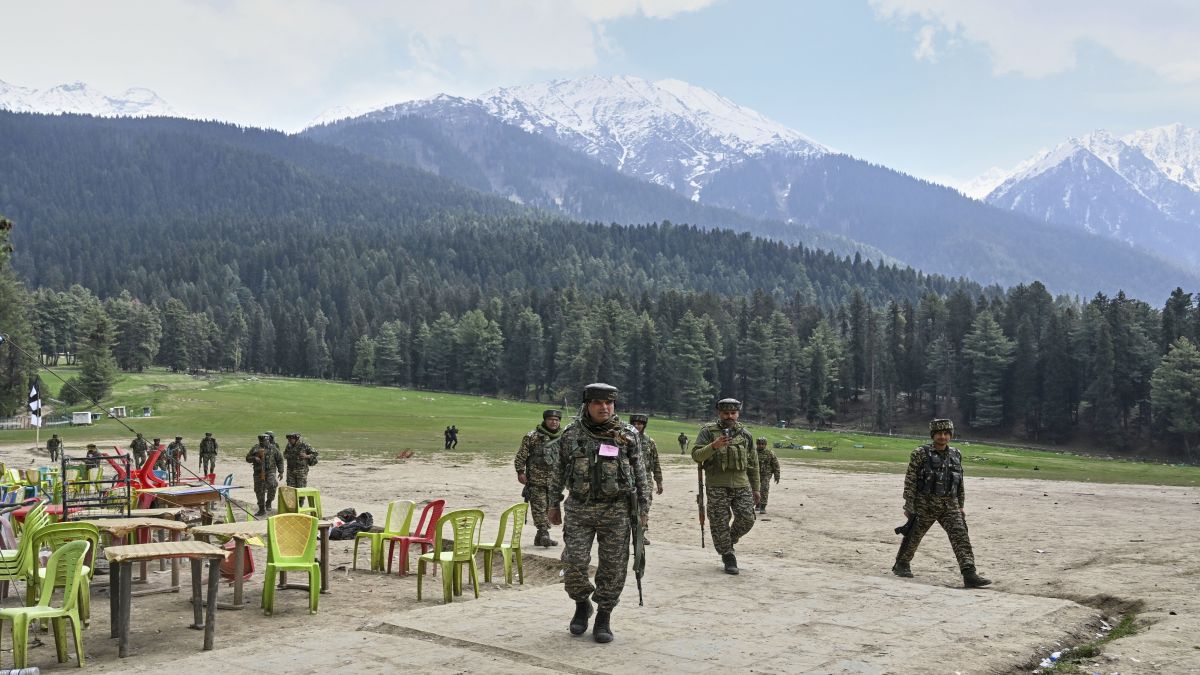Home Minister Amit Shah has confirmed that the three terrorists killed in Operation Mahadev carried out the Pahalgam terror attack.
The three terrorists, including Pahalgam mastermind Hashim Musha aka Suleman Shah, were cornered and killed by Indian security forces in a joint operation on Monday.
Shah, speaking in Parliament during a discussion on Operation Sindoor, said this has been established with the aid of forensic and ballistic tests.
“Security forces went to great extent to establish that identity of terrorists was same as those responsible for Pahalgam attack,” Shah said.
He confirmed that all three were Pakistani citizens.
“All three terrorists were Pakistani and we have their voter ID numbers as well. The chocolates recovered from them were also made in Pakistan,” he added.
But what is the ballistic matching test Shah spoke about? How does it work? How did India establish the link?
What is it?
First, let’s take a look at ballistics – the study of projectiles and firearms.
Ballistics as a science dates back to the 16th Century.
It came into its own during the early part of the 20th Century.
The science made several advancements during World War I and World War II.
Ballistics is vital when it comes to studying crime scenes.
This is because it helps identify which firearms have been used.
It can also help prosecute those who committed the crime by being entered as evidence into court.
Ballistic matching is done to find out if a specific gun fired a certain bullet or used a specific cartridge.
It is done by examining bullet fragments or cartridge cases retrieved at the crime scenes or the weapons themselves.
This evidence are then sent to ballistic experts who have gone extensive training, sometimes for years, to perform these duties.
These experts can then narrow down the type of gun used at a particular scene or match the gun with the casings and the cartridge.
How does it work?
The experts first examine the evidence retrieved.
They use calipers and balances to examine the bullet fragments and shell casings.
They also use stereo microscopes and comparison microscopes to find out which bullets have been fired.
They also have special equipment which helps them analyse the trigger pull of the firearm and the interior of the barrel.
All this helps them determine the calibre of the gun fired.
This can be done because most modern guns are built to certain specifications.
If the examiners have the weapon, they also look at rifling marks – spiral grooves inside the gun barrel that spin the bullet as it exits.
They also study the firing pin marks, which is left on the back of the cartridge when the gun fires and Breechface marks – which comes from the back part of the gun that presses the cartridge. They also look at extractor and ejector marks that are left when the gun ejects the used cartridge.
Experts also sometimes test-fire the weapons and recover the spent bullets and cartridge cases.
They do so firing the weapon into a large tank of water with an opening to retrieve the bullets.
However, some people have also expressed scepticism about how accurate ballistics is as a science.
A study by the US Defence Department’s Forensic Science Centre indicated that examiners got a “false positive” in every one of 66 cases.
They said it could be as high as one in 46.
Others have expressed similar worries.
A piece in Scientific American noted that a study performed by the Ames Laboratory, know as Ames II, found a false positive rate of 52 per cent in bullets and cartridge cases comparisons.
It said researchers who were sent the same evidence, which was later sent to other examiners, came to different conclusions at least two-thirds of the time.
Different examiners reached the same conclusions under a third of the time.
This, the piece argued, undermines claims of the science’s efficacy.
How did India establish the link?
India in the aftermath of the Pahalgam attack had sent the cartridges recovered for forensic analysis.
Then, on Monday, after Operation Mahadev, India recovered a cache of weapons from the hideout of the neutralised terrorists.
Among the weapons were M-9 and AK-47 rifles.
These were sent to Chandigarh on Monday night via special aircraft to be tested at the Central Forensic Science Laboratory.
The weapons recovered were then test fired and their casings collected.
Shah said the Forensic Science Laboratory (FSL) report of the cartridges from the Pahalgam terror attack was already prepared.
The test results were compared to the earlier reports prepared and were found to be a match.
Shah said it has thus been confirmed that these three terrorists had carried out the terror attack in April.
He added that six ballistic experts had signed off on the same.
“There’s no room for doubt. I have the ballistic report in my hand, verified and signed by six top scientists. At 4:46 AM, I received a video call confirming a 100 per cent match between the bullets fired at the site and the rifles recovered during the operation,” Shah said in Parliament.
With inputs from agencies


)

)
)
)
)
)
)
)
)



